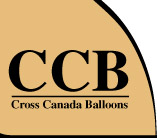|
 . .
GLOSSARY OF BALLOON TERMS Balloon Crew: People who function both as ground crew, helping with pre-flight preparations, and chase crew, retrieving the balloon after its flight and packing it back into the chase vehicle.
Balloon Basket: Also “gondola”. Most commonly made of wicker, it carries the pilot, passengers and a variety of equipment. The typical balloon basket holds two 15 gallon tanks of propane gas and can carry up to one pilot and two passengers.
Burners: The fuel burning source of a modern hot air balloon, consisting of coil tubing and a fuel ejecting nozzle. A double burner system generates 32 million BTUs per hour. A pilot “burns” by turning or pulling the blast valve.
Chase Vehicle: The truck and trailer carrying the balloon components, pilot and crew. Frequently painted with corporate, commercial or personal designs.
Corporate Balloon: Balloons used as a form of advertising.
Crown: The top centre point of a balloon envelope. Attached to the crown is the crown line, which a crew member holds taut when the balloon is being inflated, preventing swaying of the envelope.
Deflation: The pilot of a hot air balloon deflates the envelope by “ripping” out the top panel, the deflation port, of the balloon with a ripcord or deflation line.
Distortion: The variation of the standard inflated shape of a balloon caused during inflation by strong winds, or during flight by the venting of hot air from the envelope, or by wind sheers. “Spinnakering” is a sailing term for the distortion of an envelope being inflated or tethered in a high wind.
Envelope: The fabric bubble of modern rip-stop nylon or other synthetic material. Load tapes running vertically down the envelope end in cables which attach to the baskets’ uprights.
Free Flights: Un-tethered, a balloon drifting with the wind. Technically, a balloon cannot be “steered”, but the pilot can sometimes change direction by ascending or descending to wind currents at a different altitude. Winds up to about 10 miles an hour are suitable for flying. A typical hot air balloon flight lasts one hour.
Inflation: The filling of an envelope with cold air from an inflator fan and hot air from the burners. After an envelope is about 75 percent filled with cold air, hot air inflation begins. When the air inside the envelope becomes warmer than the air outside, the envelope rises to a standing position.
Laying Out: A ground crew’s walking a balloon envelope out of its bag and spreading out the fabric, readying it for inflation. Part of the pre-flight assembly of a balloon.
Maneuvering Vent: A slit in the side of the balloon envelope opened by the venting line for the spilling of hot air from the envelope. Venting enables the balloon to descend faster than it would by the cooling of the air inside the envelope. Corporate pilots often vent in order to rotate their balloons so that the company logo on the envelope faces the crowd.
Night Glow: Also known as balloon glow. The crowd-pleasing random or synchronized blast of burners to illuminate a group of balloons after dark. Begun near Albuquerque as a Christmas Eve festivity. |
|
